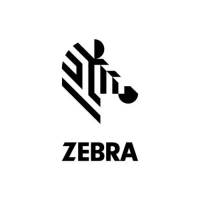3 - 4 DS2278 Digital Scanner Product Reference Guide
Digital scanner decodes bar
code, but does not transmit
the data to the host.
Digital scanner is not programmed
for the correct host type.
Scan the appropriate host type
programming bar code. See the chapter
corresponding to the host type.
Interface cable is loose. Re-connect the cable.
Cradle is not programmed for the
correct host type.
Check digital scanner host parameters or
edit options.
Digital scanner is not paired to host
connected interface.
Pair digital scanner to the cradle by
scanning the PAIR bar code on the cradle.
Cradle has lost connection to the
host.
In this exact order: disconnect power
supply; disconnect host cable; wait three
seconds; reconnect host cable; reconnect
power supply; reestablish pairing.
If the digital scanner emits four long
low beeps, a transmission error
occurred.
This occurs if a unit is not properly
configured or connected to the
wrong host type.
Set the digital scanner's communication
parameters to match the host's setting.
If the digital scanner emits five low
beeps, a conversion or format error
occurred.
Configure the digital scanner's conversion
parameters properly.
If the digital scanner emits
low/high/low beeps, it detected an
invalid ADF rule.
Program the correct ADF rules. Refer to
the Advanced Data Formatting
Programmer Guide.
Host displays scanned data
incorrectly.
Digital scanner is not programmed
to work with the host.
Scan the appropriate host type
programming bar code.
For RS-232, set the digital scanner's
communication parameters to match the
host's settings.
For a Keyboard Wedge configuration,
program the system for the correct
keyboard type, and turn off the CAPS
LOCK key.
Program the proper editing options (e.g.,
UPC-E to UPC-A Conversion).
Digital scanner emits short
low/short medium/short high
beep sequence (power-up
beep sequence) more than
once.
The USB bus may put the digital
scanner in a state where power to
the digital scanner is cycled on and
off more than once.
Normal during host reset.
Table 3-1 Troubleshooting (Continued)
Problem Possible Causes Possible Solutions

